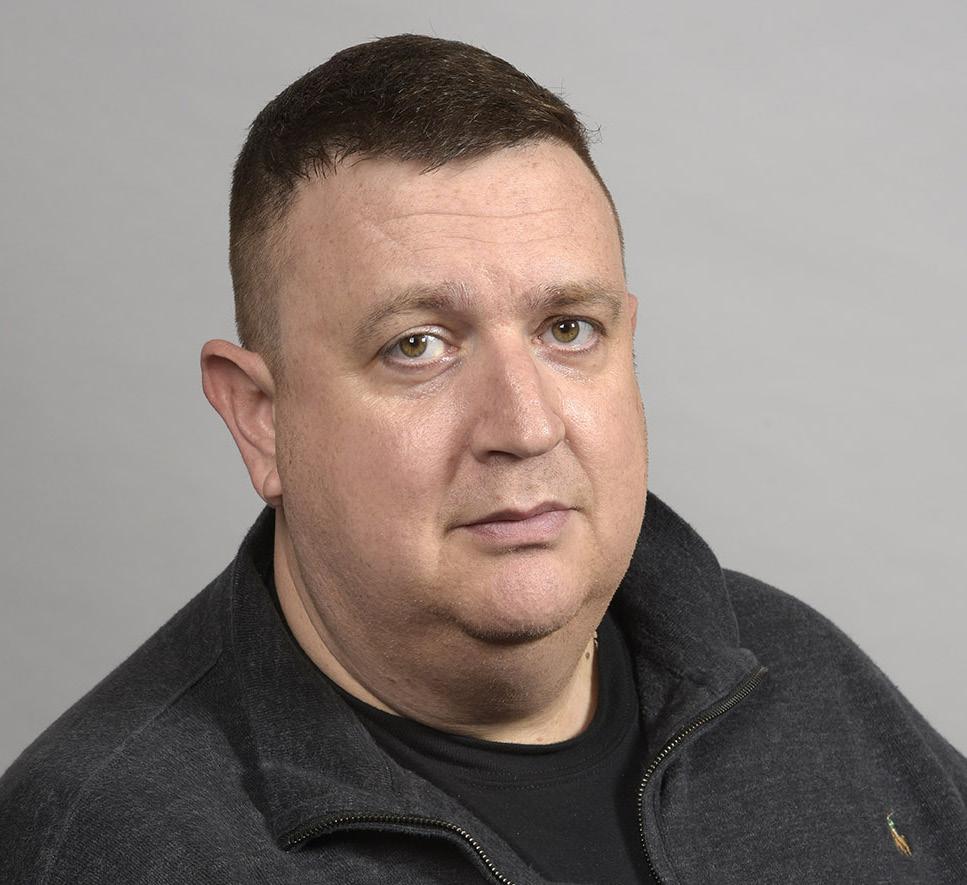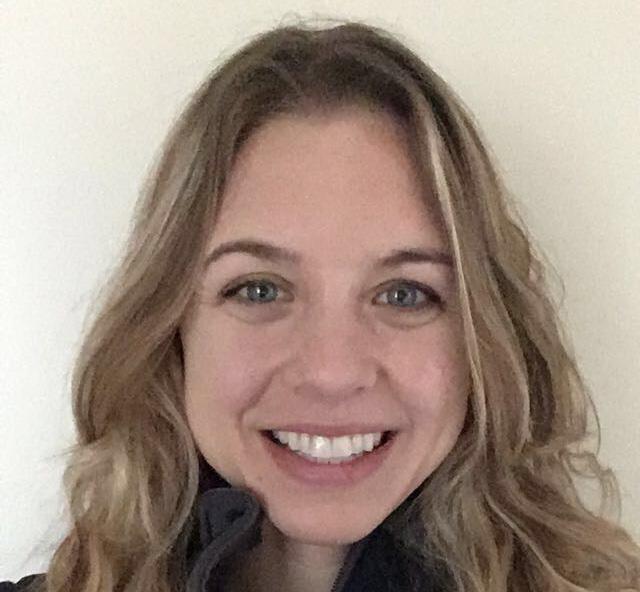
6 minute read
UR Nursing Students Volunteer to Help Community’s COVID-19 Efforts
UR Nursing Students
to Help Community’s COVID-19 Efforts
When the University of Rochester School of Nursing switched to remote learning and most of the students’ clinical hours and jobs were put on hold at the onset of the COVID-19 crisis, Andrew Wolf, EdD, MS, RN, ACNP-C, director of educational effectiveness and assistant professor of clinical nursing, sensed an opportunity.
He emailed UR Nursing graduate students asking if they’d be willing to help the Monroe County Health Department’s COVID-19 relief efforts.
Wolf received an overwhelming number of responses. Within a few hours, more than 40 students offered to volunteer their time and knowledge to aid others.
One of the volunteers, Kathleen Mullaney, RN, had just eloped with her then-fiancé in a Texas courthouse where they exchanged vows and $10 Walmart rings while their families watched on Zoom. The couple had planned to marry in Rochester in June, but decided to forego a larger ceremony and reception for the well-being of their loved ones.
A student in the combined Family Nurse Practitioner (FNP) to Doctor of Nursing Practice (DNP) program, Mullaney had temporarily relocated to Texas because that’s where her husband was stationed, and because her current employer, St. Joseph’s Neighborhood Center, had closed its doors to patients due to state-mandated guidelines.
Although she was living more than 1,000 miles away from Rochester, Mullaney answered the public’s questions submitted through Monroe County’s COVID19 phone hotline and designated email account. She and other volunteers were provided access to the county’s secure system where the emails and phone calls were collected. Volunteers were responsible for answering each question based on their expertise, research from the Centers for Disease Control and Prevention (CDC)’s website, and other validated resources.
“I have a really deep connection with the Rochester community. I want to make sure things are going well, and that I’m at least part of the solution,” Mullaney said. “Having these conversations, even though I’m far away, is important to me.
“It eases our anxieties, but it also helps the community and the department of health who are most likely feeling overwhelmed. Educating and helping others through hard times is in our nature and, for some, volunteering helps provide a sense of normalcy.”
While Mullaney was staying connected to Rochester from across the country, Tom Bonfiglio, who was halfway through the one-year Accelerated Bachelor’s Program for Non-Nurses (ABPNN), couldn’t have been closer to the city’s COVID19 front line.
Monroe County’s Office of Emergency Management (OEM) solicited nurses and student nurses to administer COVID-19 screenings, deliver isolation and quarantine instructions, provide wellness checks on isolated patients, and drop off sanitation supplies to patients in home isolation. When he wasn’t studying, Bonfiglio donned PPE and joined this group of volunteers.
For Bonfiglio, these visits were not unfamiliar. His EMS experience spans over 25 years and has no borders. Prior to enrolling at the UR School of Nursing last year, he had worked as regional director for American Medical Response and
Mullaney

Bonfiglio

Wheeler
as a subject matter expert for EMS and fire protection services in Bolivia and Kenya. Even as a student in the ABPNN program, Bonfiglio continued to work part time as a paramedic for Wayne County Advanced Life Support.
Due to his experience, Bonfiglio was tapped by OEM to provide leadership and guidance to nursing personnel unfamiliar with working in the community setting.
Before the volunteer opportunity, Bonfiglio said, “The hardest part was being home when everyone was helping the cause. It was very difficult for me to just sit doing school work. I think it was the guilt and stress that finally pushed me to do something. This is what we’re cut out to do, isn’t it?”
Taylor Wheeler, RN, a student in UR Nursing’s Adult-Geriatric Primary Care Nurse Practitioner program, is a nurse on Strong Memorial Hospital’s bone marrow transplant floor. She said one of the biggest challenges the pandemic presents is in the bone marrow transplant ward, where patients are among the most immunocompromised populations in the hospital.
“My unit has been struggling with how to keep these patients safe from the virus and how to limit potential exposure,” Wheeler said. “We’ve had to ban all visitors from seeing their loved ones in an attempt to limit the spread of the virus. It’s taken its toll on our patients.”
On top of her work and school responsibilities, Wheeler volunteered at the recommendation of her professors who supported creative ways for students to gain clinical hours during the pandemic.
“When I saw there was a need for people to make phone calls to the community, I jumped right in. I wanted to share my knowledge and understanding of the virus with others who don’t understand it.”
Like Mullaney, Wheeler was a respondent on the Monroe County Health Department triage line, but Wheeler was designated a team leader.
“As the team leader, I help decide who will answer which calls and how we will divide the work. I also take on difficult questions, and advise my colleagues on how to answer them,” Wheeler said.
“Unfortunately, we don't always have the answers to some of the questions. So much is still unknown about this virus.”
Rochester Black Nurses Association Joins Coalition Providing Care to Communities of Color
Nursing students were not the only ones volunteering their time to serve the Rochester area. In early spring, the Rochester Black Nurses Association (RBNA) teamed up with the Black Physicians Network of Greater Rochester and other public health organizations to form “Community Fighting COVID.” The group was formed to address the disproportionate impact of the pandemic on communities of color in Monroe County.
According to data collected at the end of October from the Emerging Infections Program at the Center for Community Health and Prevention at the UR Medical Center and adjusted for age, Black Rochester residents contracted the virus at three times the rate of white residents. The primary reason for the racial discrepancy is because of deep-rooted social and economic inequalities, reminiscent of the HIV epidemic, according to a paper co-authored by UR Nursing faculty and alumni (alumnus Orlando Harris ’14N [PhD] and assistant professors Mitchell Wharton, PhD, RN, FNP-BC, CNS, and Natalie Leblanc, PhD, RN, MPH) and published this summer in the Journal of the Association of Nurses in AIDS Care. The intersections of HIV and COVID-19 disease-related stigmas and the systemic racial inequity (i.e., housing, health care access, employment, education) experienced by marginalized communities in the U.S. are directly related to the health disparities in cases and deaths related to HIV and COVID-19, write the authors.
The Rochester Black Nurses Association, which is sponsored by the UR School of Nursing and counts UR Nursing faculty and students among its members, was particularly active in offering COVID-19 pre-screenings in Black and multicultural communities. It also received a grant from the National Black Nurses Association and the Black Hollywood Education and Resource Center to assist communities affected by COVID-19. Working with its community partners, the RBNA found that food and medication assistance were major concerns, so the organization purchased and distributed gift cards to local grocery stores, RBNA president Yvette Conyers ‘07N told the Democrat & Chronicle. RBNA nurses also met with families to answer their questions about how the virus could affect individuals with sickle cell disease.






